Nature enthusiasts, and adventure seekers, are you looking for a challenge that will test your limits? Then, Mount Kilimanjaro is the destination of choice.
Mount Kilimanjaro is for many climbers the hike of a lifetime, so failure is not an option! You need to get acquainted with some facts about Mount Kilimanjaro before you undertake your trek.
Kilimanjaro is the highest mountain in Africa as well as the highest freestanding mountain in the world.
Each year, about 15,000 people attempt to reach the summit and the overall success rate is about 65%.
Mount Kilimanjaro encloses three distinct volcanic cones:
- Kibo (5895m or 19341ft).
- Mawenzi (5149m or 16893ft).
- Shira (4005m or 13140ft).
Uhuru Peak is the highest summit of the mountain and is on the Kibo cone. Several climbing routes on the Kilimanjaro will lead to Uhuru Peak.
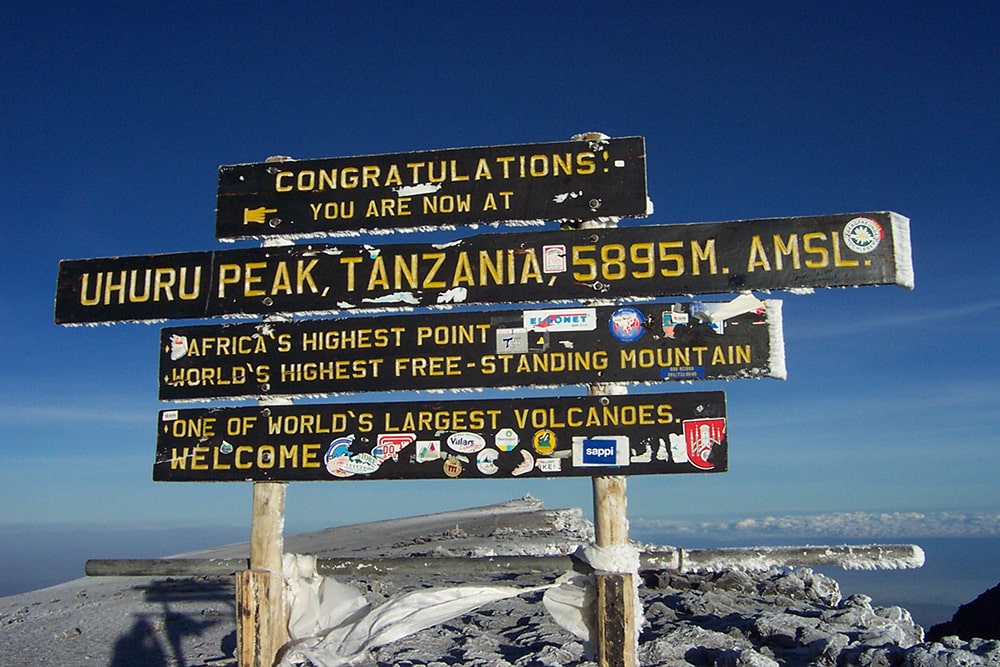
Altitude Sickness
One concern that climbers face when hiking to high altitudes is altitude sickness, also known as Acute Mountain Sickness (AMS).
You must familiarize yourself with the symptoms of Altitude Sickness before your expedition. Hence, you will know what to look for, enabling you to take action and avoid any health issues.
Altitude sickness happens at high altitudes when you cannot get enough oxygen from the air. The most common symptoms are headaches, trouble sleeping, shortage of breath, loss of appetite, and hypothermia.
Altitude Acclimatization
Altitude acclimatization refers to the process that allows your body to adjust to a lower concentration of oxygen at high altitudes.
The inability to acclimatize yourself to high altitude could lead to altitude sickness.
The main cause of altitude sickness is a very quick climb to high altitude. If you experience any symptoms of altitude sickness, you should descend immediately!
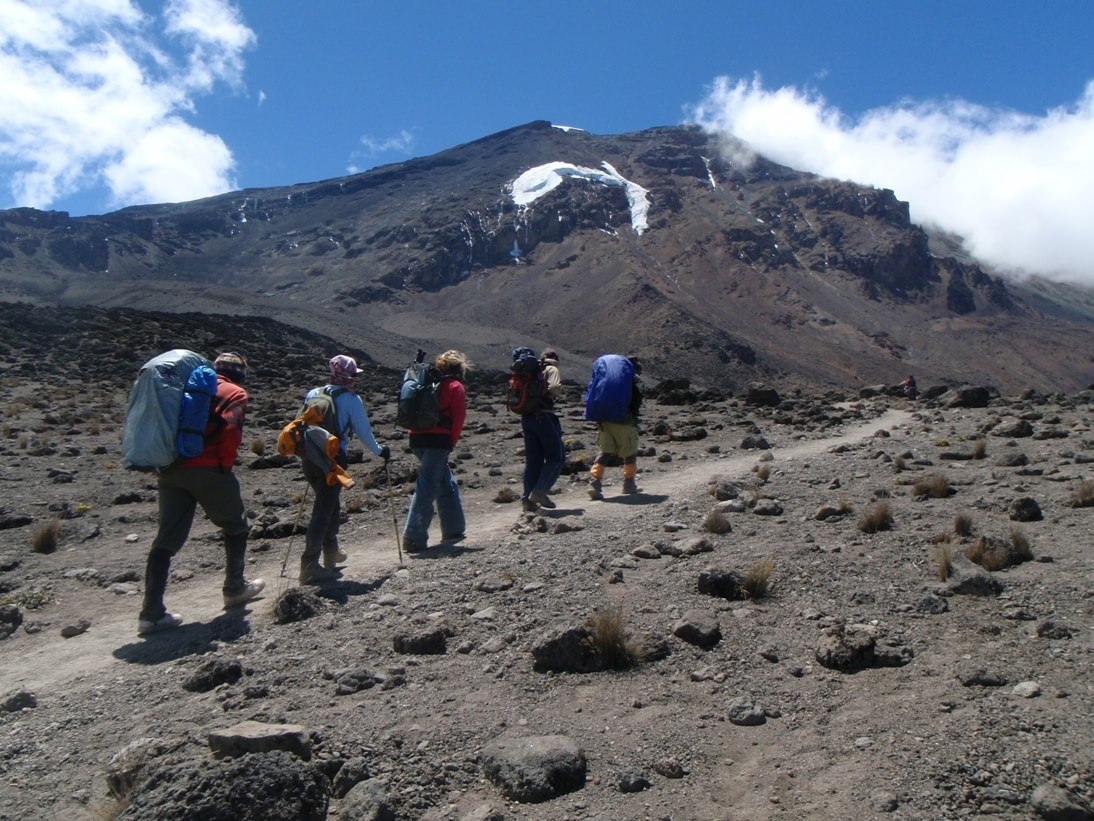
To help you acclimatize yourself to the high altitude, climbing experts recommend:
- Drink ample water during your climb, typically 4-5 liters daily (1-1.3 gallons).
- Avoid alcohol during the first 24-48 hours of being at a high altitude. Alcohol causes dehydration, which will exacerbate acute mountain sickness.
- Avoid any strenuous activity within the first 24 hours of being at a high altitude.
- Walk high and sleep low. Let me explain this. You climb to a high altitude, spend a few hours at that altitude, and descend to a lower altitude to sleep.
The Kilimanjaro offers a huge physical challenge to anyone wishing to climb to the summit.
So, before making the trek of your life, get in shape! Enroll in a training program at least six months before your trip.
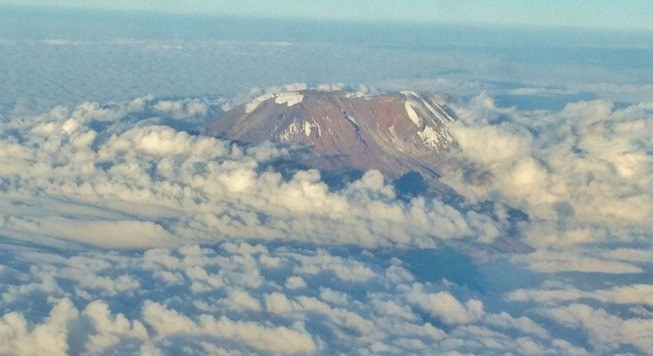
Your training program should include challenging hiking excursions and also workouts on a stair-climber. Build up some stamina and some muscles!
To improve your odds of reaching the summit, book a longer excursion, typically 7-9 days.
Don’t let your eagerness of reaching the summit quickly get the better of you! While a shorter trip will translate to a cheaper trip, the success rate is low. You need, in general, at least 6-7 days to acclimatize to the high altitude.
Better acclimatization will significantly increase your chances of success.
Finally, if you want to achieve your goal of climbing to the summit of Uhuru Peak, you ought to pace yourself! This journey is not a race to the top! Ascend slowly and steadily.
Climbing Routes of Mount Kilimanjaro
There are seven established routes available for climbing Uhuru Peak. The ascent to the summit begins at midnight, so trekkers reach the rim of the crater at sunrise.
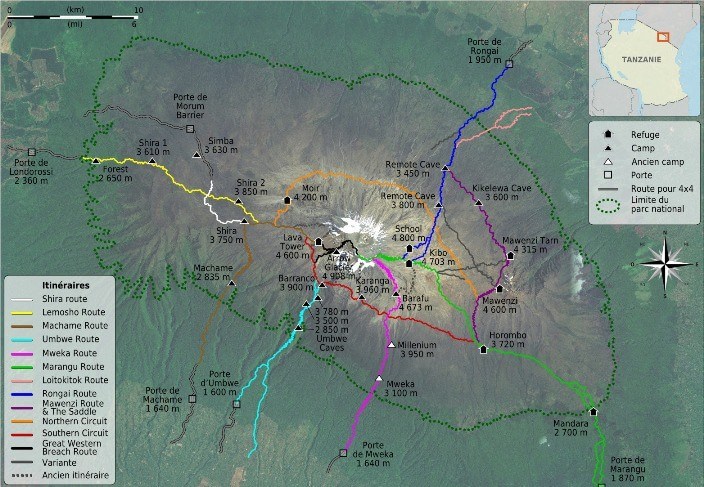
Northern Circuit Route
The Northern Circuit Route is the longest route to the peak of Kilimanjaro and is a challenging climb. It will take you nine days to reach the top, giving you ample time for acclimatization.
As a result, the success rate is among the highest of all the climbing routes of Kilimanjaro.
You approach Mount Kilimanjaro from the West. You begin your trek on the Lemosho trail up to the Lava Tower, and then you head north by going around the mountain.
You descend through Mweka Route, which is used solely for going back down from the mountain. The Northern Circuit is the newest route, therefore, not much traffic.
This trail offers scenic views and is gaining notoriety as being the best route on Mount Kilimanjaro.
Lemosho Route
The Lemosho Route on the west side of Mount Kilimanjaro is the preferred trail for many climbers. Although classified as being difficult, the success rate is high.
The climb to the summit is usually done in 6-8 days, which leaves enough time for acclimatization.
The Lemosho Route encompasses spectacular landscapes ranging from gorges to rainforests. The Mweka Route is used to descend from the mountain.
Rongai Route
The Rongai Route is the only route approaching Kilimanjaro from the north. This trail is the least scenic route among all the climbing routes of Kilimanjaro.
However, the Rongai Route offers a true wilderness experience in the first days of the climb.
The Rongai Route is the perfect choice for climbers with little backpacking experience.
This trail encounters little traffic. Therefore, this route is an excellent alternative to the very crowded Marangu Route.
Machame Route
The Machame Route is also known as the “Whiskey Route.” This trail is the second most popular climbing route on Mount Kilimanjaro.
This route offers a challenging trek and is best suited for fit climbers. Machame Route approaches Kilimanjaro from the south.
The trail features stunning scenery by encompassing five different ecosystems.
However, there is a high volume of traffic, which could be less appealing for some climbers.
Shira Route
The Shira Route is a steep trail and is the only route that has a starting point at high altitude. You drive up to the Shira Gate located at 11,500ft (3500m), where you begin your trek.
By driving to the starting point, instead of walking, you are more likely to suffer from altitude sickness because of the lack of acclimatization.
Marangu Route
The Marangu Route is nicknamed the “Coca-cola Route” since the Coca-cola beverage is served on that route. The Marangu Route is the oldest trail to the summit of Mount Kilimanjaro.
Thus, the Marangu Route is well established and considered to be the classic trek route on Mount Kilimanjaro. However, this trail falls victim to its fame, since it is very crowded.
The Marangu Route is the preferred choice of inexperienced, unprepared climbers since it is classified as an easy route.
The failure rate for this trail is 65%, the highest of all the climbing routes of Kilimanjaro! This high failure rate is partly due to the lack of preparation and the inexperience of many climbers.
Another contributing factor is the lack of opportunities for acclimatization. The Marangu Route is among the shortest routes, which doesn’t allow enough time for acclimatization.
Umbwe Route
The Umbwe Route is the least popular of all and offers quite a challenge. Only very experienced climbers should attempt to reach the summit through this route.
By far, this is the hardest route on the mountain which is reflected by the very low success rate. This trail is the shortest and the most direct way to Uhuru Peak.
The climb is very steep and very demanding. Therefore, you need to be physically fit with no serious health issues to trek on the Umbwe Route.
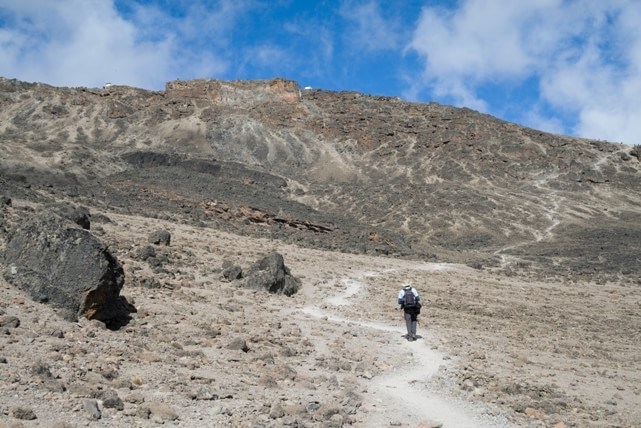
Ready to Stand on Africa’s Roof?
Now that you know how to reach the summit of Kilimanjaro, which climbing routes are you going to pick? Personally, I would opt for either the Rongai Route or the Lemosho Route. Do you agree with my choices?
To improve your odds to reach Uhuru Peak successfully, get fit! Also, select a climbing route that allows you ample time for acclimatization to avoid altitude sickness.
Are you ready to stand on Africa’s roof? If so, read my full review of the best climbing routes on Kilimanjaro, here.
If you have any inquiries about climbing the Kilimanjaro, please drop me a line below. I would love to hear from you!
Hello Sonia,
I am a trekker and photographer. I have always wanted to climb Mount Kilimanjaro at least once in my lifetime. You have composed an elegant and informative post here! You mentioned that Northern Circuit Route is the longest and new. It is better for acclimatization but is this route ideal for photography (landscape)?
Thanks for this post!
Alex
Yes, the northern route is better for acclimatization since it’s the longest and with not much traffic, for now! However, as it will gain in notoriety, it might get more crowded over time since it has a high success rate.
And you answer your question, yes, the Northern Circuit Route is a very scenic route, with an excellent opportunity for landscape shots.
Nice article, my husband and I did some backpacking a couple years ago in Colorado. We both learned about altitude sickness very quickly. Now we are much more careful when going to higher elevations. This had some great information for those of us who enjoy this kind of entertainment.
The key to avoiding altitude sickness is to give yourself enough time for acclimatization. This will significantly reduce the risk of altitude sickness and make your hiking experience much more fun!
I loved reading this! I hiked quite a bit in Glaciar National Park and loved every minute of it. Thank you for the information on altitude sickness. It’s real and not a lot of fun. Great work!
I’m glad that you found it be to be very informative. And you are right about the fact that altitude sickness needs to be taken very seriously. So often time experienced hikers fall victim to altitude sickness because they push themselves too hard trying to prove something.